MEDICINE AND ART: IMAGINING A FUTURE FOR LIFE AND LOVE – LEONARDO DA VINCI, OKYO, DAMIEN HIRST
HAPPENINGText: Alicia Tan
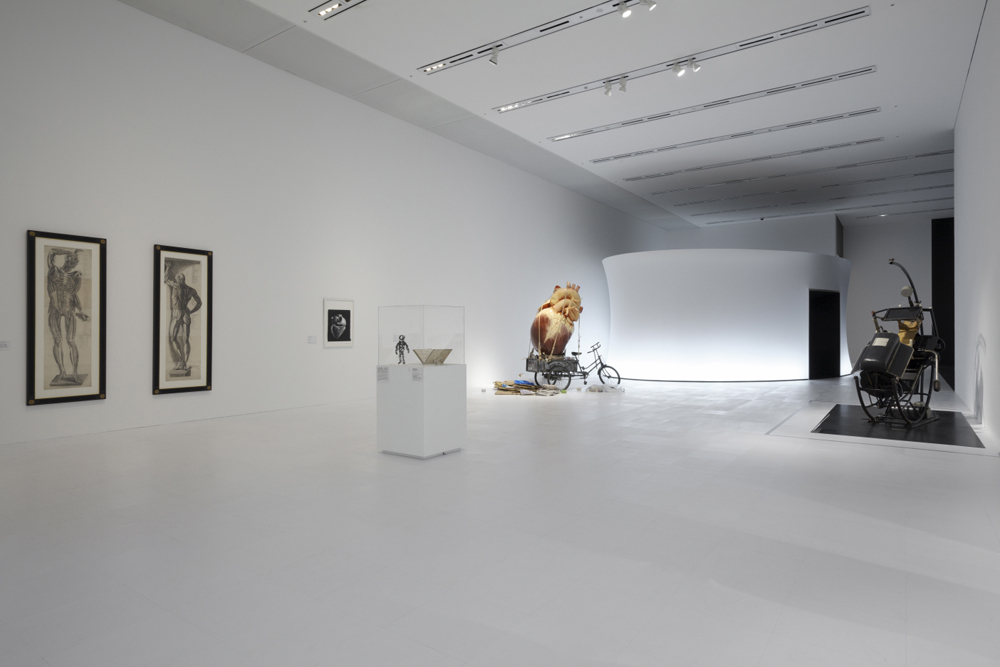
“Medicine and Art: Imagining a Future for Life and Love”. Photo: Osamu Watanabe, Photo Courtesy of Mori Art Museum
Nietzsche once said that “Art is the proper task of life”. Mori Art Museum’s latest exhibition, “Medicine and Art”, reflects the same sentiment that the human body can be seen as the middle ground in which the two otherwise irreconcilable areas of medicine and art meet and flourish.
Bringing together around 150 renowned medical artifacts from London’s Wellcome Collection, as well as historical and contemporary art pieces, the exhibition certainly does well in creating a unique atmosphere in which visitors can observe and determine for themselves, where science starts and beauty begins.

Leonardo da Vinci Two Studies of a Cranium. 1489. Pen and ink, over traces of black chalk 18.8×13.4 cm. ROYAL COLLECTION ©2009 HER MAJESTY QUEEN ELIZABETH II
Fans of Leonardo da Vinci will also be delighted to see three of his anatomical drawings from The Roval Collection on display. Two of these drawings are debuting for the first time in Japan.
The trifecta of sections (“Discovering the Inner World of the Body”, “Fighting Against Death and Disease”, “Toward Eternal Life and Love”) explore the relationship between past, present and future, drawing upon medical equipment and illustrations, Japanese paintings and contemporary installations to illustrate the tenuous relationship we have with the intrusion of medicine into our bodies as well as how it ‘perfects’ and heals us.

Jacques-Fabien Gautier d’Agoty Dissection of a Pregnant Female Figure. Lateral View. 1764-65. Oil on canvas 193×53.5 cm. Wellcome Library
Upon entering the exhibition space, visitors are greeted by Jacques-Fabien Gautier d’Agoty’s two paintings. What initially seems to be a shocking introduction to the exhibition, in retrospect, is an all-too-obvious melding of both ‘art’ and ‘medicine’ in the way d’Agoty’s women have been dissected. It is in it’s artistic merit that the almost cold and cruel scientific approach is softened, muted for the everyday observer.
I can’t help but feel that the Mori Art Museum did a good job in easing visitors into the exhibition with this first room and its careful balance between old and new, science and art with the pieces of Andy Warhol’s silk screened heart juxtaposed against the 19th-century X-ray table.
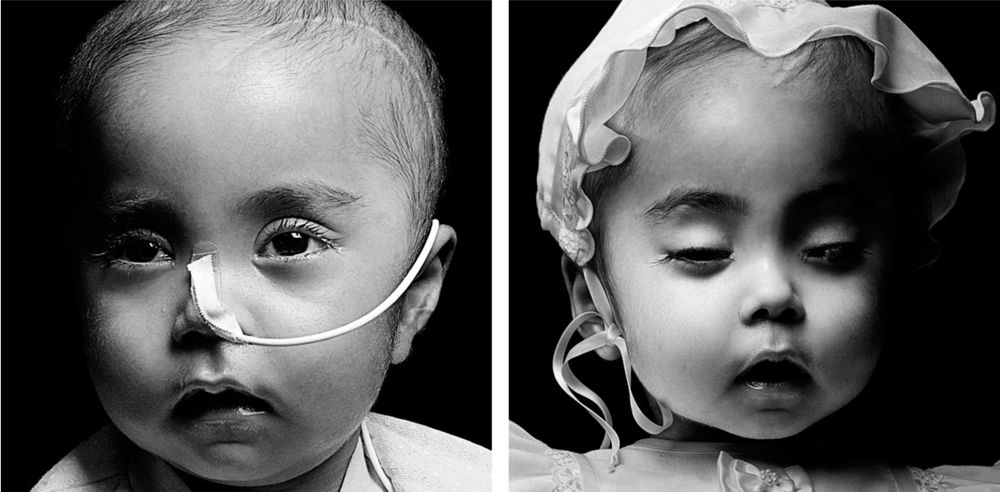
Walter Schels Life before Death – Elmira Sang Bastian. 2004. Photography each 100 x 100 cm
Visitors will also have their heartstrings tugged with Walter Schels’ poignant photographs of a child before and after her death (‘Life before Death — Elmira Sang Sebastian’). It is curious to note that the child looks equally ‘false’, made up and artificial, in both photographs, again blurring the line between artifice and life.
Hence in imitating life, art does more than merely serve as a well-wrought copy, as the exhibition points out in its selection of installations.
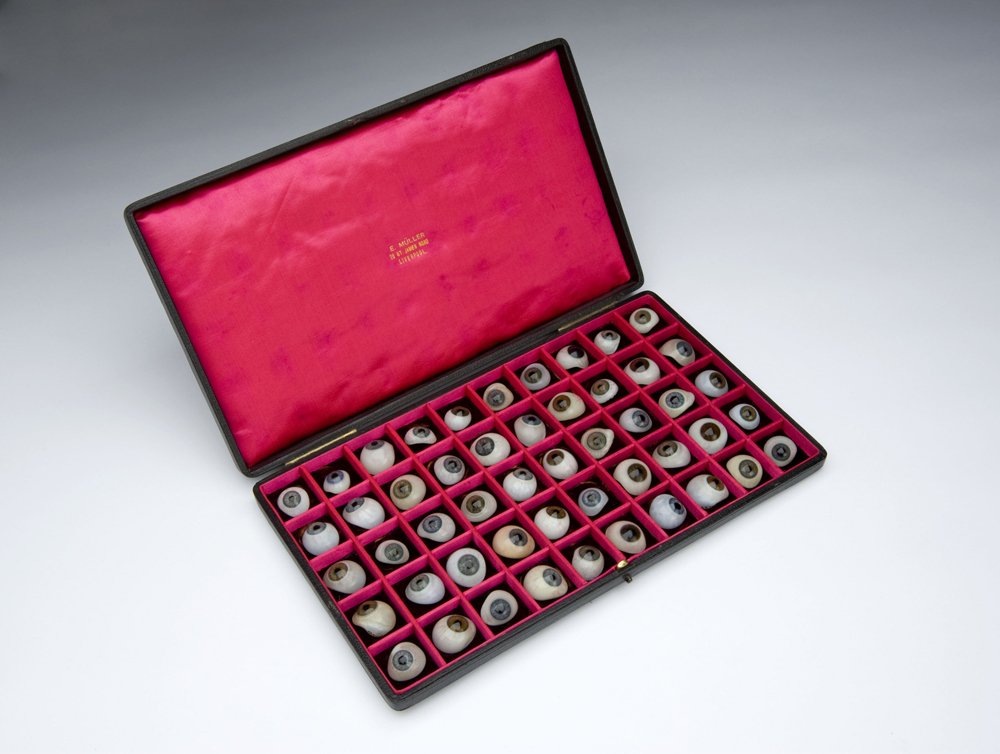
E. Muller, Set of 50 Artificial Glass Eyes. 1900-1940. Liverpool, England. Glass, wood, velvet, leatherette. 3×31×18 cm. Science Museum, London
E. Muller’s set of 50 glass eyes strikes a discomfiting equilibrium as they stare back at you. Beautifully made, these medical implements allow us to forget their true purpose as ‘eyes’ and emerge as artistic objects.
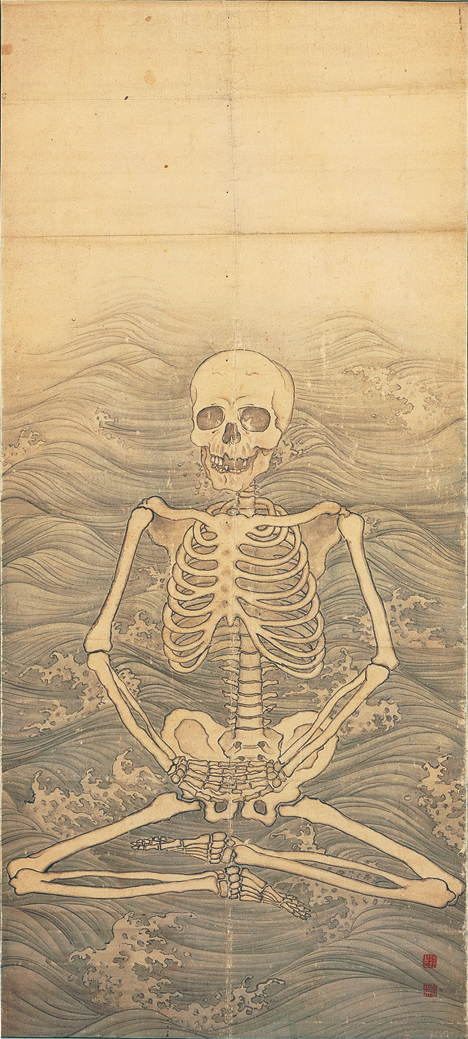
Maruyama Okyo Skeleton Performing Zazen on Waves. c.1787. Ink, paper 132.6×59cm. Daijoji temple, Hyogo, Japan
In Maruyama Okyo’s ‘Skeleton Performing Zazen on Waves’, the ink painting of the human skeleton transcends the simplicity of being an anatomically correct observation.
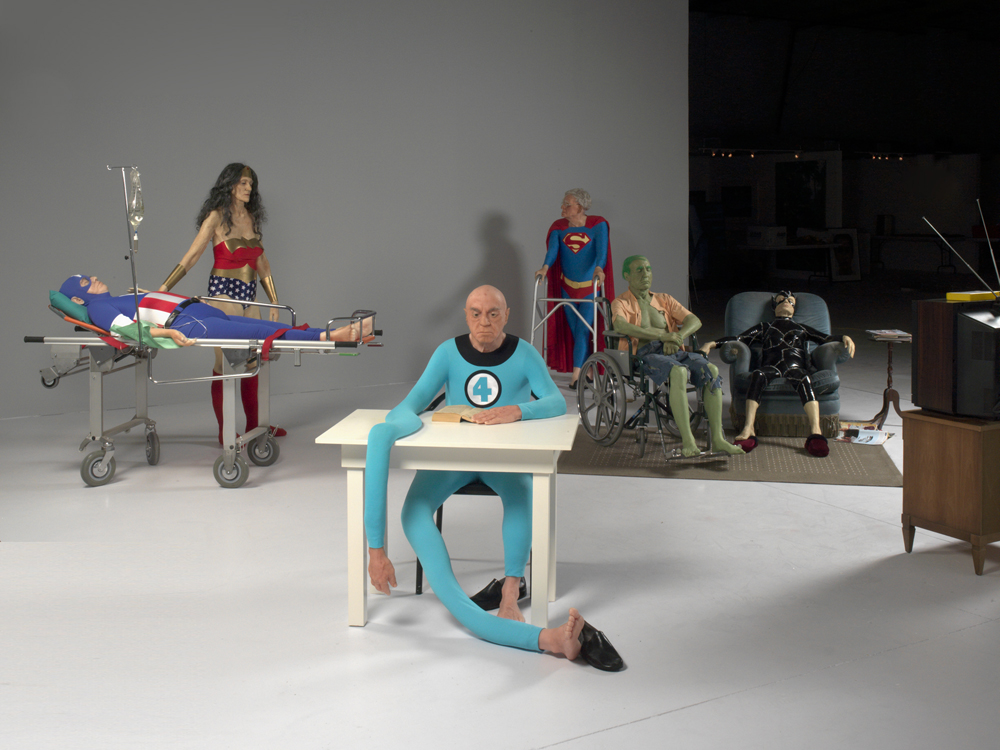
Gilles Barbier L’Hospice / The Nursing Home. 2002. Six wax figures, television, various elements dimension variable. Martin Z. Margulies, Miami, USA. Courtesy: Galerie G.-P. & N. Vallois, Paris
Giles Barbier’s playful wax installation (‘L’Hospice / The Nursing Home’) follows in this same vein, displaying once virile and effervescent superheroes in their decline: Mr. Fantastic losing his elasticity, Wonderwoman falling victim to aging, and The Man of Steel being supported by a steel walker.
Skillfully challenging the conventional ideas of ‘life’ and ‘death’, pieces such as Maruyama’s and Barbier’s allows visitors to question if death and sickness is truly the end, or if by immortalizing something in an art-form, are we prolonging its existence?
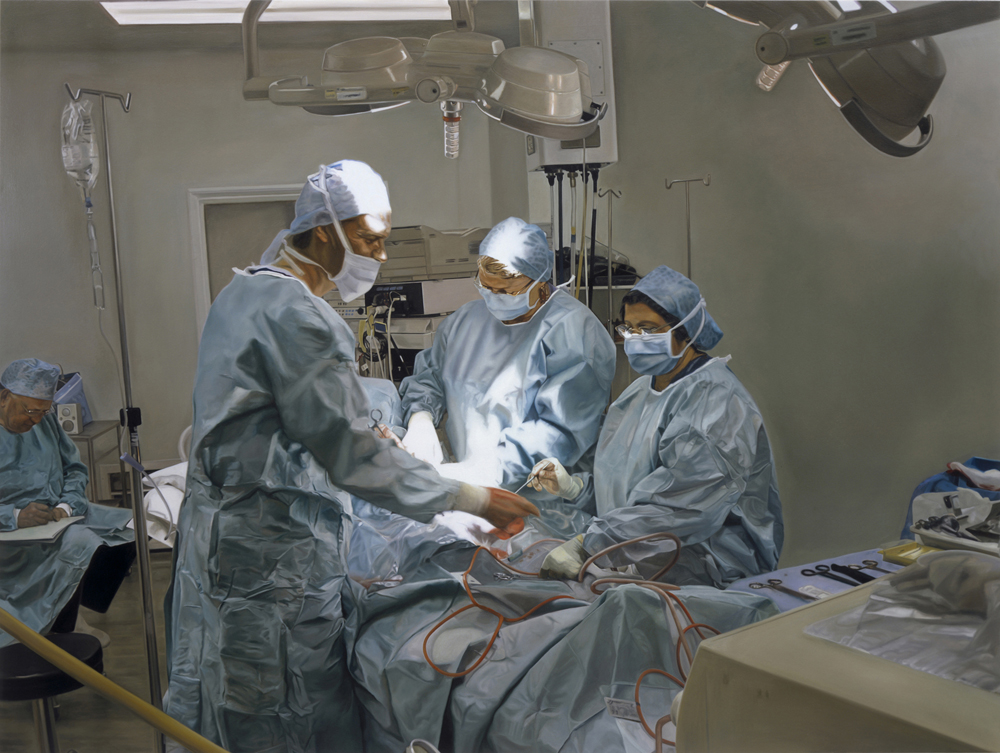
Damien Hirst. Surgical Procedure (Maia) 2007. Oil on canvas. 182.9×243.8 cm. Photo: Prudence Cuming Associates Ltd, Courtesy White Cube. © Damien Hirst, DACS, 2009
Despite thoroughly enjoying this exhibition, I personally felt that something was lacking. The inclusion of medical paraphernalia seemed to cloud my perception of viewing the other more typically artistic pieces, and at time seemed like I was being forced a dose of bitter reality. While some visitors may enjoy being vacillated between cold hard scientific facts and the contrasting abstract installations, I found the need to constantly switch between logic (‘science’) and emotions (‘art’) distracting.
As long as we live, art will continue to flourish. If medicine and future scientific advancements have their way, we might be able to forever create art — in the form of ourselves.
Medicine and Art: Imagining a Future for Life and Love – Leonardo Da Vinci, Okyo, Damien Hirst
Date: November 28th, 2009 – February 28th, 2010
Open: 10:00 – 22:00 (Tuesday till 17:00)
Place: Mori Art Museum
Address: 53F Roppongi Hills Mori Tower, 6-10-1 Roppongi, Minato-ku, Tokyo
Tel: +81 (0)3 5777 8600 (Hello Dial)
https://www.mori.art.museum
Text: Alicia Tan
Photos: Courtesy of the Mori Art Museum © the artists




